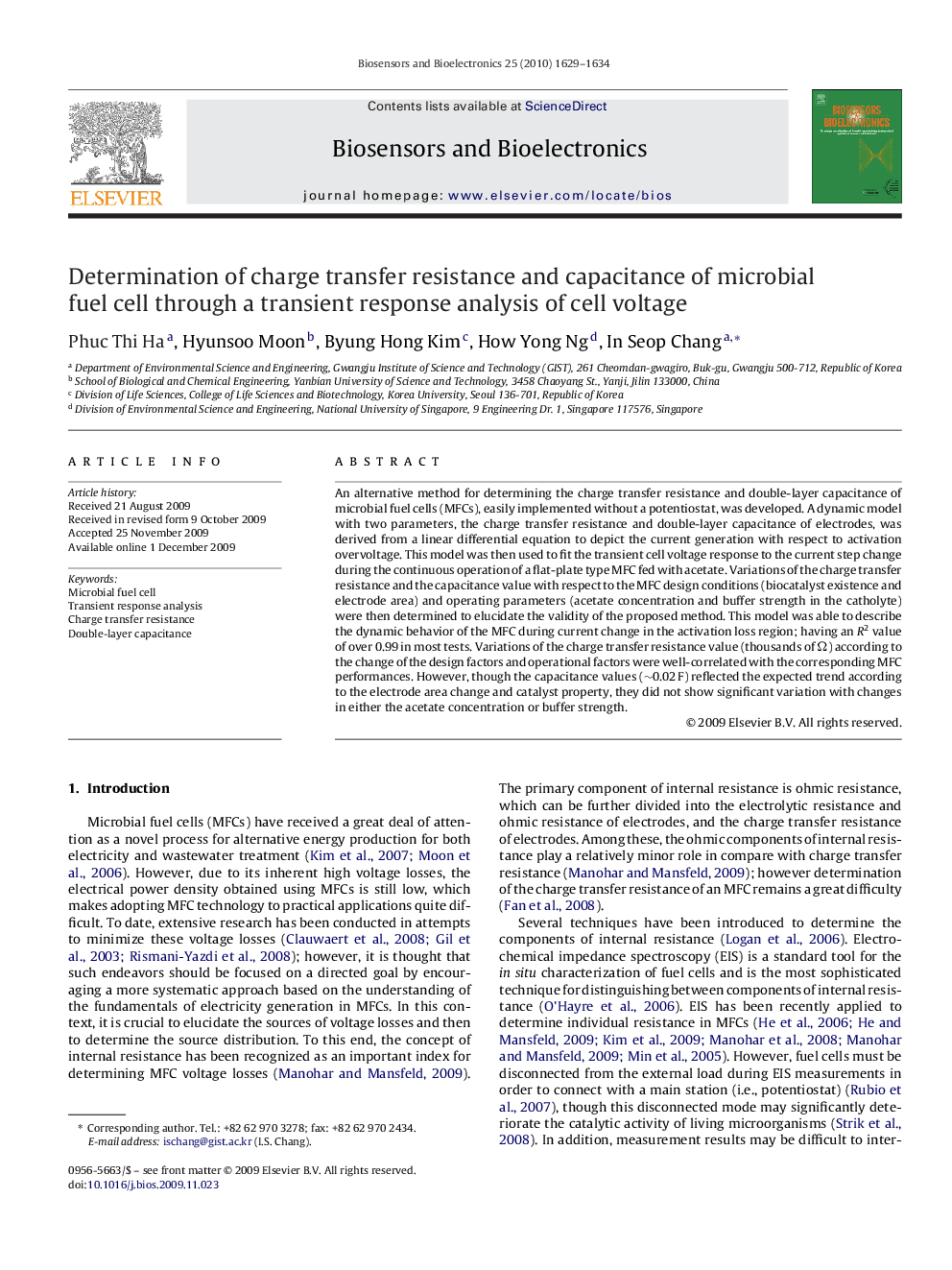| Article ID | Journal | Published Year | Pages | File Type |
|---|---|---|---|---|
| 867851 | Biosensors and Bioelectronics | 2010 | 6 Pages |
An alternative method for determining the charge transfer resistance and double-layer capacitance of microbial fuel cells (MFCs), easily implemented without a potentiostat, was developed. A dynamic model with two parameters, the charge transfer resistance and double-layer capacitance of electrodes, was derived from a linear differential equation to depict the current generation with respect to activation overvoltage. This model was then used to fit the transient cell voltage response to the current step change during the continuous operation of a flat-plate type MFC fed with acetate. Variations of the charge transfer resistance and the capacitance value with respect to the MFC design conditions (biocatalyst existence and electrode area) and operating parameters (acetate concentration and buffer strength in the catholyte) were then determined to elucidate the validity of the proposed method. This model was able to describe the dynamic behavior of the MFC during current change in the activation loss region; having an R2 value of over 0.99 in most tests. Variations of the charge transfer resistance value (thousands of Ω) according to the change of the design factors and operational factors were well-correlated with the corresponding MFC performances. However, though the capacitance values (∼0.02 F) reflected the expected trend according to the electrode area change and catalyst property, they did not show significant variation with changes in either the acetate concentration or buffer strength.
